Buying a used motorhome
If the cost of a new motorhome is out of your reach and beyond your budget – and certain brand-new models do come with a hefty price tag – don’t despair. There is another option; buy a used motorhome.
Much like buying a used car, buying a used or second-hand motorhome can see you make a significant saving in comparison to that gleaming new model, shining away in the dealership showroom.
While there are often great deals to be found on new motorhomes, there are excellent bargains to be had in the used market. As you might expect, the price range for a used motorhome is wide and it’s difficult to quote typical figures. It all depends on a number of factors, including the age, model and mileage of the motorhome.
Left-hand drive models can be exceptional value if you find them suitable, as they can usually be bought for a lower price than their equivalent right-hand drive models. Left-hand drive models can be a particularly good option if most of your holidays are taken abroad and you’ll be driving your motorhome in Europe.
Of course, when you buy a used motorhome there are other factors to consider, and not just price. Naturally, such vehicles need more inspection than new models. This guide will help you to know what to look for when buying a used motorhome.
Picture ©Warners Publishing Group
Tips on buying a used motorhome
Research thoroughly – what type of used motorhome do you want?
This is a big-ticket purchase so don’t rush into it. Take your time; our Essential Guide to Buying Your First Motorhome states that, on average, ‘most first-time buyers take up to two years before taking the plunge’, so if you haven’t bought a motorhome before, don’t get ahead of yourself. It’s exciting, but don’t buy on a whim over a weekend. Make sure you know the type of motorhome you want – and there’s plenty of choice.
Online research is the best place to start, in terms of understanding different types of motorhome, as well as prices of available used vehicles.
Our motorhome buying and selling advice section can give you important background knowledge on motorhome layouts and the different types of motorhome – low-profile, overcab and A-class. The range of models is vast. How many travel seats will you need? What type of lounge layout do you prefer? How many beds would you like? Do you want a fixed bed for the convenience or are you happy to make a bed up from lounge settees? What kind of kitchen will you need? If you like to do a lot of cooking for yourself when away, you’ll probably prefer a motorhome with good worktop space, oven, grill, hob and microwave – and a fridge with a large capacity. If you tend to eat out more often than not, you can possibly cope quite happily with a more modestly equipped kitchen.
There’s lots to think about, but once you really know what to look for when buying a used motorhome, you can start to narrow down your search. Draw up a list of what you want from a used motorhome and stick to that as much as possible.
Research prices of used motorhomes
Now it’s time to see what motorhomes are available, and typical prices you can expect to pay. Our motorhomes buyers guide database has access to thousands of makes and models of vehicles; users can search by manufacturer, class, range and model year. This can give you an appreciation of what’s available, and market value for specific used motorhomes.
For example, we searched for:
Manufacturer: Bürstner
Class: A-Class
Model Year: 2010
Berths: 4
Belted seats: 4
The search returned 11 motorhomes, from a I 620 G Viseo with a garage layout priced from £52,070 to a I 728 G Aviano with a fixed single bed layout at £65,830. How do these prices compare with your budget?
View used motorhomes for sale
Online, you can find thousands of motorhomes for sale. You have an idea of cost, and can browse similar models for sale here. A year or two older, or a ‘van with 10,000 more miles on the clock, might adjust the asking price by several thousand pounds.
Try to find as many advertised prices for your chosen model as possible. You might see quite a range, and you’re likely to be most interested in the price at the lower end of the scale. However, give some though as to why the price for a certain vehicle might be lower than others of the same model – something to bear in mind if and when you progress to the stage of viewing and inspecting it.
If you’re not fixated on a particular manufacturer, be prepared to consider similar vehicles, which gives you greater flexibility and increases the possibility of you getting the best used motorhome deal you can.
Buying a used motorhome – get advice
If this is your first motorhome purchase, you’ll inevitably have lots of questions. Who better to answer these than more experienced motorhome owners, people who have been through the buying process before? If you’re interacting with a dealer, they can answer many of your queries but it’s great to get some insight from other owners.
Online forums and communities can be an excellent source of information. Here, once you sign up and join, you can post questions about specific makes and models, and potentially learn about any common problems or faults. Hopefully, there aren’t any but it’s important to amass as much information as you can at this research stage.
When you find a used motorhome that you’re interested in, it will be for sale with either a dealer or trader, or privately. The process can differ depending on who is selling it – here are some tips on buying a used motorhome from a private seller, and from a dealer.
Buying a used motorhome privately
A private seller is not obliged to make any statements as to the vehicle’s condition initially, but if questioned on any specific point, must give you a truthful answer. It is always advisable to insist that any such claims are put in writing and signed by the buyer, so that you have some redress in law if any such claims are subsequently found to be false.
Establish that you are in contact with a genuine private seller. A trader is obliged to disclose their status on every classified advertisement that they place. The often-repeated advice still stands: when responding to a private advertisement, always say that you are enquiring about “the motorhome”. If it is a trader masquerading as a private seller, they will usually be forced to ask you, “which one?”
Always ask to see the motorhome at the seller’s house if possible (check the address on the vehicle registration document). Be wary if it is at a storage site and never, ever arrange to meet the seller in a car park. Avoid viewing the vehicle either after dark or in the rain, as dents and scrapes are more easily concealed. Try to take a friend for advice and moral support.
Just as if you were buying a car, always insist on seeing full documentation and proof of ownership, along with the chassis and engine number. Both the AA and the RAC offer online history checks and you can book a full inspection and road test.
Insist on a test drive and a demonstration of all the equipment, including everything that operates from a mains hook-up. Thoroughly check the condition of all seals, both external and internal, as it can be a very time consuming operation to replace them.
Many legitimate small traders and private sellers use eBay as a cost effective shop window for their vehicles and may even display a location and phone number. It is highly unwise to bid for a vehicle unseen, especially if the vendor is not prepared to disclose both their full contact and vehicle details before making a bid.
Buying a used motorhome from a dealer
You will nearly always pay a higher price when you buy from a dealer, but you might feel that the extra cost is worth it for the peace of mind. A dealer will usually have a good selection of vehicles for you to compare and is duty bound to ensure that everything is safe and in working order.
Most will also offer a guarantee, with 12 months being the most common, although there may be trade-ins on sale that are offered as “sold as seen”. Remember that the dealer has to bear the cost of employing staff and maintaining the premises, along with customer facilities.
Reputable dealers will also give you a hand-over session, to explain all facilities and controls before you take the vehicle off the premises.
Some dealers will only put the vehicle on display when it has been fully serviced and any necessary repairs have been carried out. Not all dealers have the storage space to do this, so you may find minor faults such as broken knobs and hinges, faulty seals or even delamination of the floor. These should all be carried out before the vehicle is taken away, but it is always wise to get all found faults recorded, with a signed agreement to correct them.
Picture ©Warners Group Publications
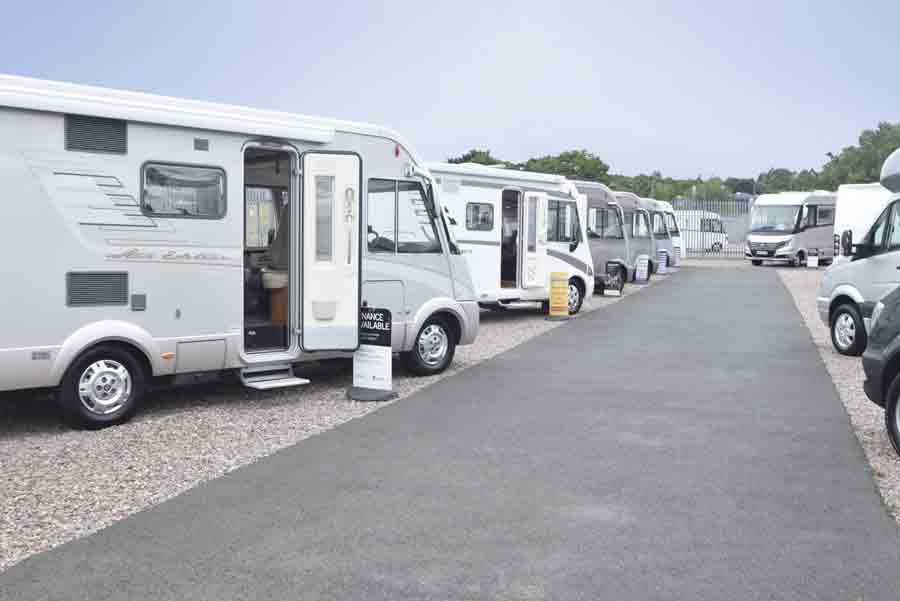
Insist on a test drive. Amazing though it might sound, many motorhomes are sold without ever being driven by the new owner. Apart from revealing mechanical faults, it will also highlight any squeaks, creaks and troublesome cupboard doors.
If you are thinking of taking advantage of a special deal at one of the shows, or see a bargain a long way from home, find out what will happen in the event of a claim against the guarantee. If you are lucky, the dealer will offer to pay for a repair carried out closer to home, but check this out beforehand. You can hardly complain about the inconvenience of taking it back to the vendor if you didn’t check this out at the time of the sale.
Inspecting a used motorhome
Picture ©Warners Group Publications
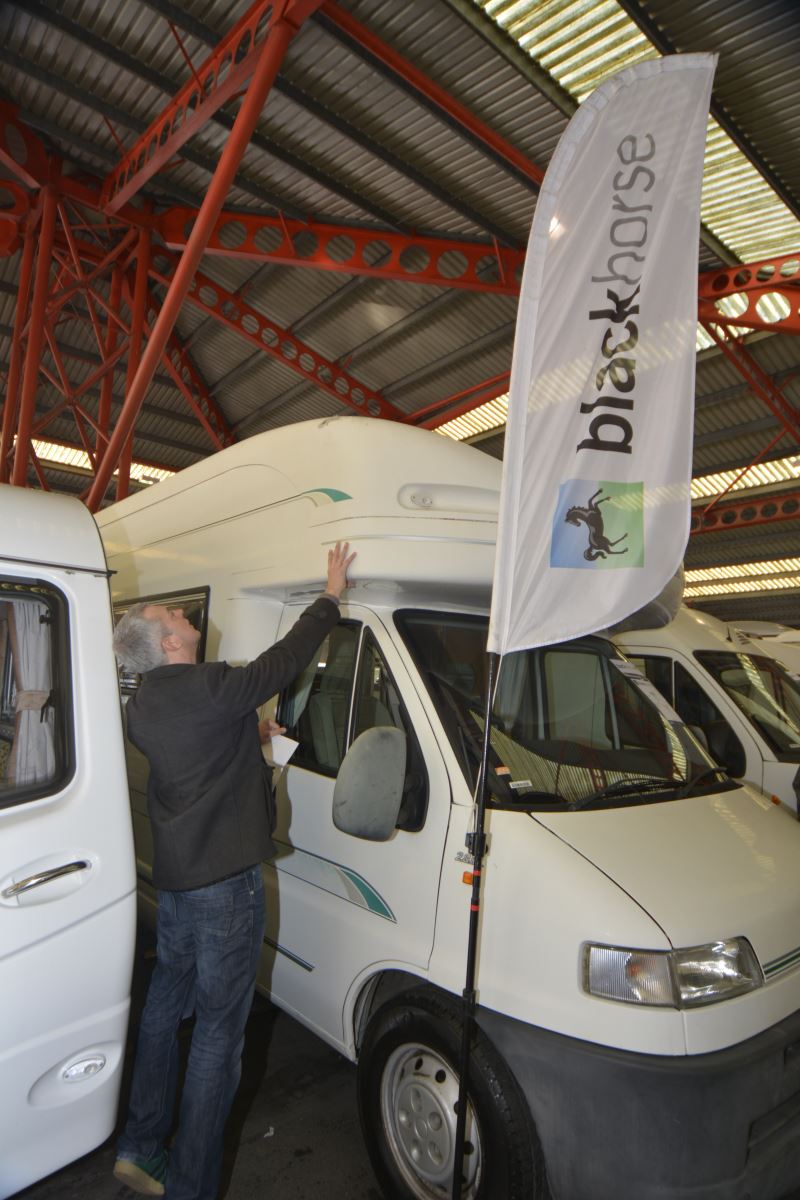
When you’ve found a motorhome that you are considering buying – whether from a private seller or dealer - the next step is to arrange a suitable occasion to see it in the flesh, so to speak. This is a critical part of the process – it goes without saying that you should never agree to buy a used motorhome on the basis of seeing a few photos and a brief description on a website.
At this point, you shouldn’t commit to anything. The importance of a close inspection of a motorhome cannot be underestimated. There are a number of areas that need attention, but always bear the overall rule in mind – trust your instincts. If something doesn’t feel right, don’t go ahead.
Don’t know what you should be looking for? This video on MMM TV – presented by Senior Road Tester, Dave Hurrell – provides some expert guidance on what to look for when buying a used motorhome.
To help you with a thorough inspection of the vehicle, use the following checklist to make sure you cover everything off:
Checklist for buying a used motorhome
Work through this list when viewing any motorhome you’re thinking of buying:
Check the motorhome’s exterior
You should be looking for obvious defects in the vehicle’s bodywork - dents, scuffs, and scratches. Check the wheelarchs, too, and also the roof, which is sometimes neglected by owners. There might be possible damage here from overhanging trees, or it might be in poor condition simply from not being cleaned regularly. Pay particular attention to the rear panel of the vehicle. It’s often the scene of damage after the motorhome has been reversed into objects.
Picture ©Warners Group Publications
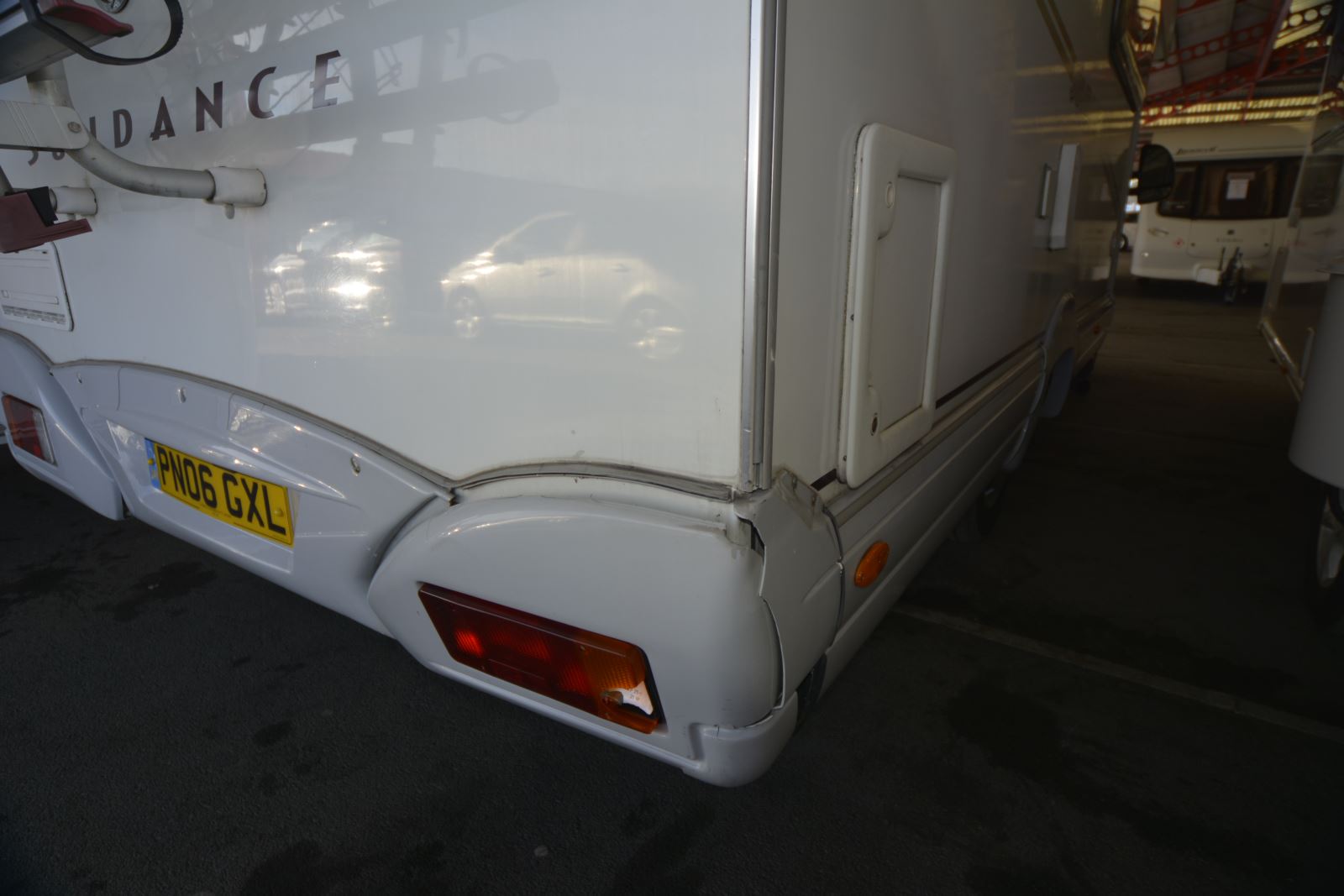 Check the motorhome’s tyres
Check the motorhome’s tyres
Inspect the condition of the tyres, from a legal and safety point of view but also, to confirm they are the correct type for the year of manufacture. If the tyres are more than four to six years old, they probably need changing. Check the load rating to ensure the tyres are suitable for the overall weight of the vehicle.
Check the interior of the vehicle
Test and check that all technical items in the motorhome function correctly, including
control panel, water pump, lighting, locker doors and drawers (that they open and close correctly), blinds and heating. Check that all the kitchen equipment works – the fridge, hob, oven, grill and microwave.
Picture ©Warners Group Publications
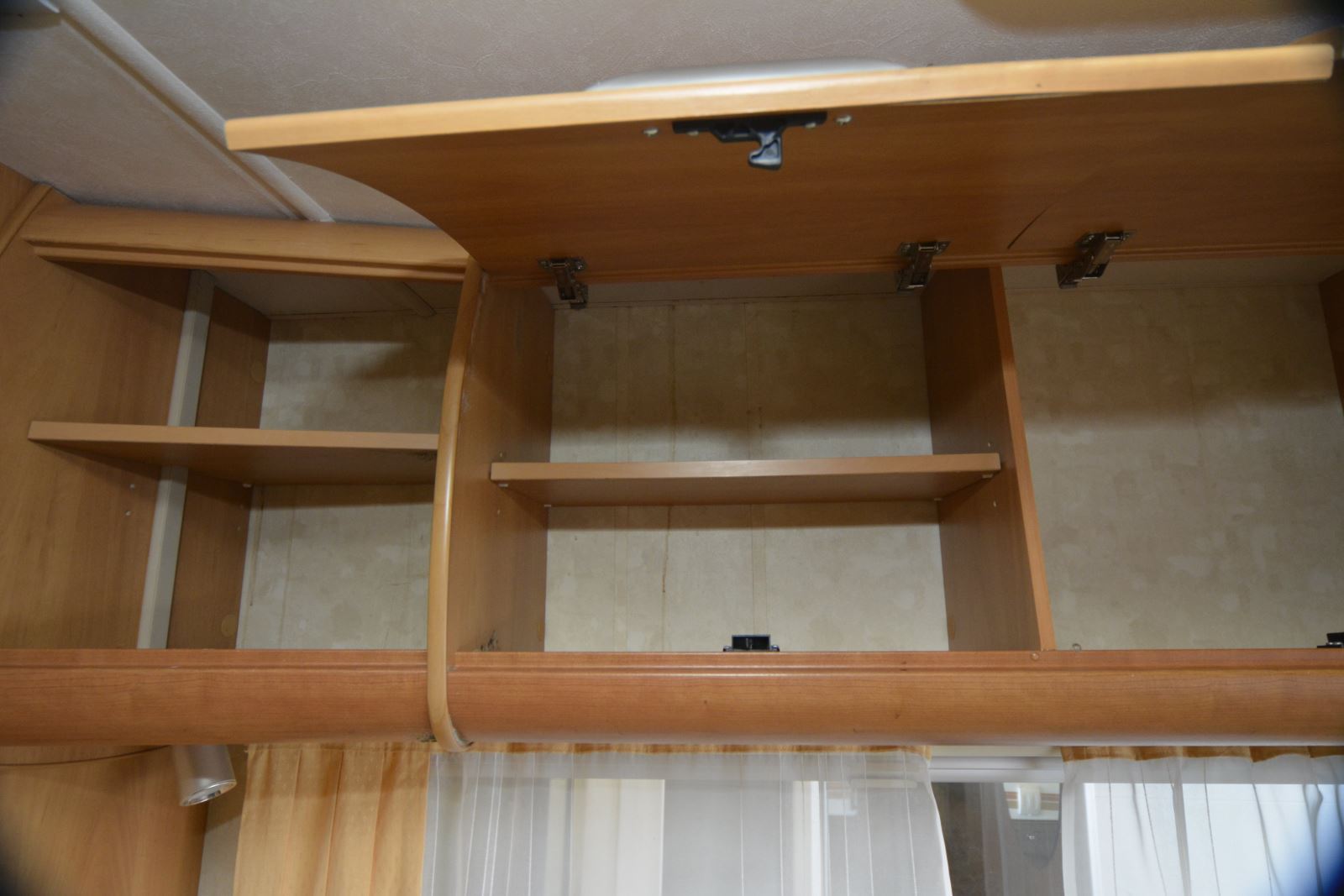
Base vehicle checks
Base vehicle next – get into the cab and check that everything is in good working order. You should be looking at cruise control, central locking, air conditioning, electric windows, windscreen wipers, mirrors (especially if electric) and lights. Check that the stereo works, and make a note of the mileage on the speedometer; you’ll need it when you look at the paperwork.
Damp checks
It’s important to check for signs of damp in a motorhome – not the sort of issue you need to consider then viewing a used car. Damp and water ingress can cause serious problems in a motorhome. There are obvious tell-tale signs of damp but don’t just rely on what the naked eye can see. Use a damp meter to check for any damp in the wall. Hand-held meters don’t cost much and can be worth the investment – repairs to motorhomes affected by damp can be expensive.
Review all paperwork
Ask to see all relevant paperwork regarding the motorhome – you should be presented with lots of documents. Check the mileage on the sales documents match with what’s on the speedometer, check for service history, any warrant and a history check on the vehicle. You should also have a handful of manuals for all the various items of equipment in the motorhome – such as the fridge and oven
Take it for a test drive
Just as you would car, you should take the motorhome for a test drive. If you’ve never driven a motorhome before, this is really important. Make sure you drive down rough and smooth roads, and pay particular attention to any rattling. Lots of motorhomes will rattle to a certain extent but if there’s excessive rattling and the cause isn’t obvious, raise it as a possible issue.
Allow plenty of time for checking, the test drive, and asking questions. Don’t allow yourself to be rushed – you’re the customer, and you need to be satisfied before making any decision to buy.
Buying a used motorhome is not only be a great way to enter the world of ‘van ownership for the first time, it’s also a way of finding a bargain and making motorhoming more affordable. In time, you may choose to upgrade to new motorhomes or continue to buy quality used vehicles – there’s a vast marketplace and no end of choice.
Good luck with your motorhome adventures. For further reading, subscribe to MMM – Britain’s best-selling motorhome magazine - every month. It’s full of buying advice and motorhome reviews.






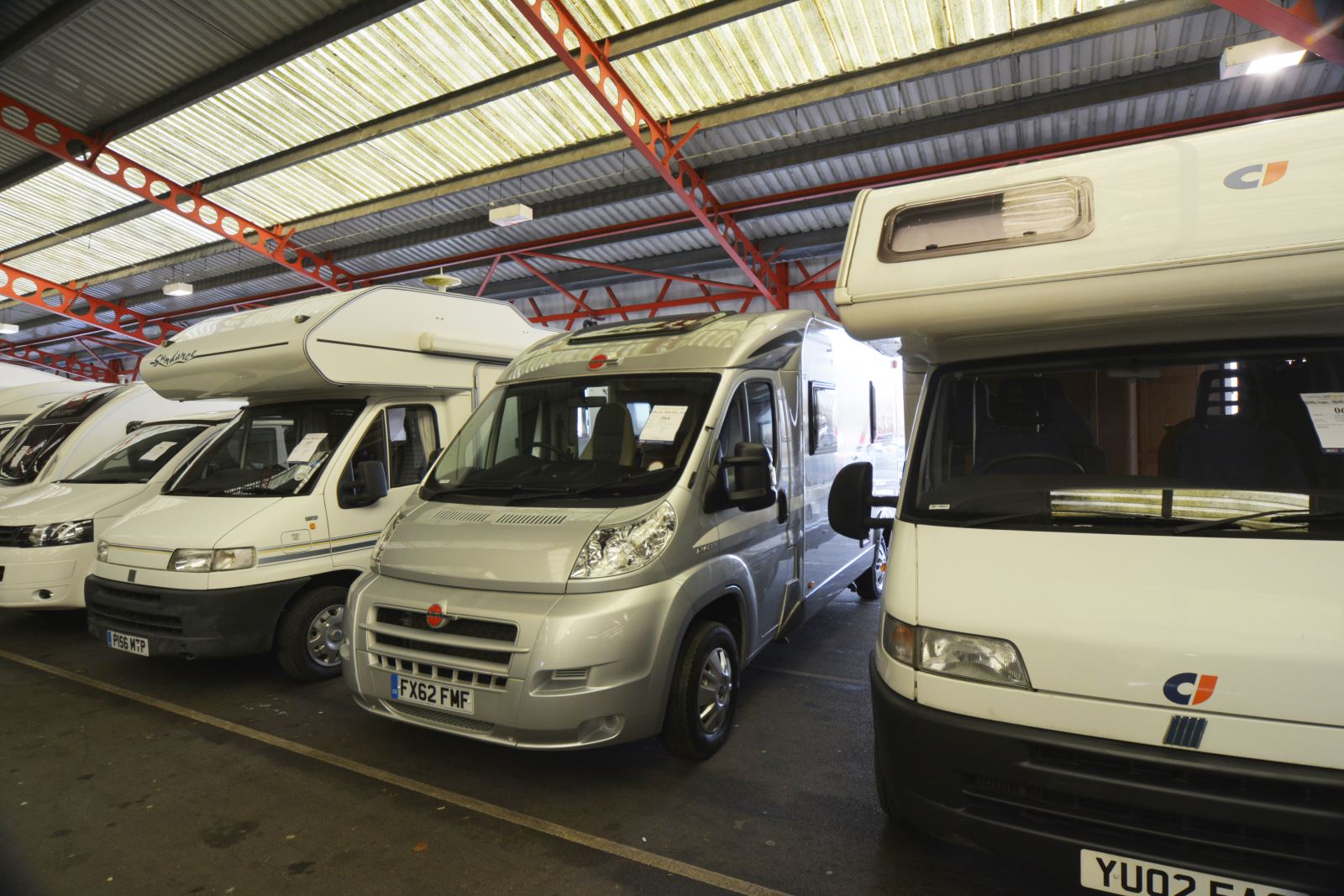


Recent Updates
Engine management lights: all you need to know
What is the engine management light? What does it mean, and what do I have to do? ...
Motorhome air suspension: all you need to know
Motorhomes are heavy and the additional weight of equipment and height of the bodywork can increase the loads ...
Motorhome WiFi: how to get better motorhome internet
Staying connected on the move is more and more essential, so relying on campsite WiFi isn't an option – here ...
A class of their own - our guide to A-class motorhomes
Thinking of trading up to an A-class, or even going straight to the top of the motorhome tree? We guide you ...
Explore overseas on a motorhome dream tour
Enjoy exotic travel in a campervan or motorhome by hiring, swapping with someone else or exporting your ...
Motorhome water systems: everything you need to know
On-board water is an important part of every motorhome – here’s everything you need to know ...
Campervanning in Europe: what you need to know
Whether you're planning a leisurely drive through the French countryside, navigating bustling city streets in ...
Campervan security: all you need to know
With thefts on the increase, it’s important to know how to keep your campervan secure and prevent campervan ...
Campervan furniture: everything you need to know
Our campervan experts guide you through all the essentials for your campervan, including tables, chairs, ...
Campervan finance: how to fund your purchase
Here we look at the different types of campervan finance available, to help you decide what’s the best option ...
Other Articles
Britain’s best used motorhomes
Want a great motorhome without paying the premium for a new one? Here's a guide to the best you can get in the pre-owned market for each layout, ...
Which motorhome? Choosing the perfect motorhome for you
Choosing a motorhome or campervan is one of the biggest buying decisions you’ll ever make, so it's important ...
Campervan washroom essentials: stay fresh on the road
Our guide will take you through the campervan washroom essentials you'll need so you're well-prepared for ...
Dogs in campervans: all you need to know
Follow our advice and your dog will enjoy campervanning as much as you do ...
Electric campervans: all you need to know
Our guide will take you through everything you need to know about electric campervans and what the future ...
Motorhome electrics: a complete guide to your motorhome electrical set-up
Motorhome electrics can dramatically enhance the convenience and comfort of your vehicle – but they can be ...
Lighting for campervans: all you need to know
We guide you through all the lighting options available for you and your campervan, including interior ...
Electric bikes for motorhomes: our ultimate guide
Read our comprehensive guide to electric bikes for motorhome owners, helping you add electric power to your ...
Our guide to 'cheap' motorhomes in 2024
If you're on the hunt for an affordable new motorhome, this is the best place to start – we've rounded up a ...
Campervans in winter: all you need to know
Here's your guide to preparing your campervan for the colder months, whether you will be using it or putting ...